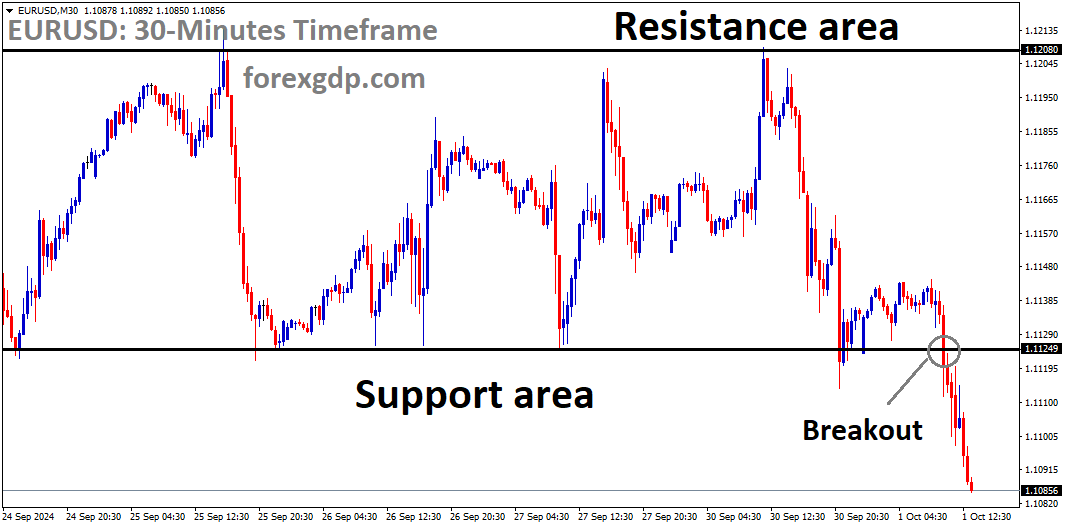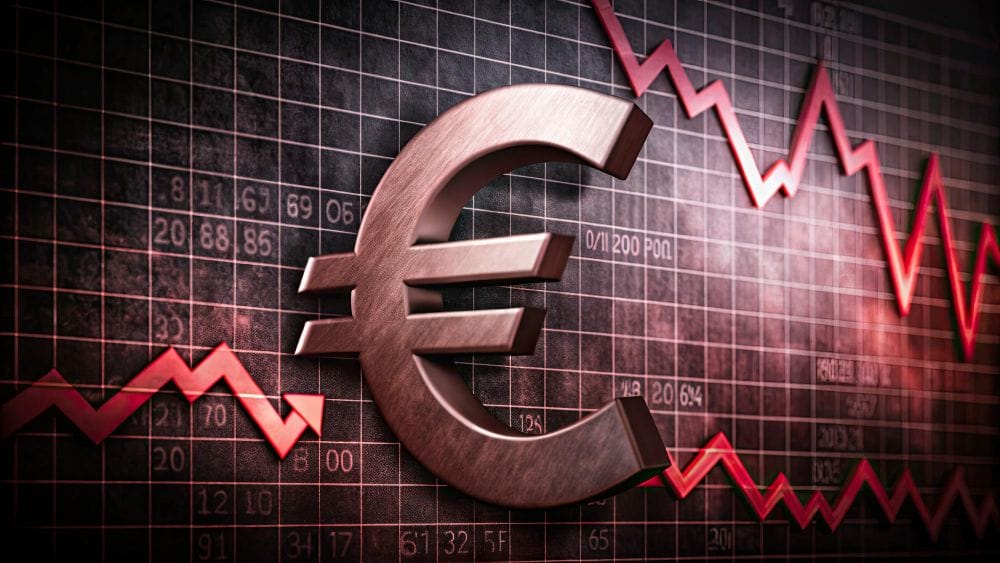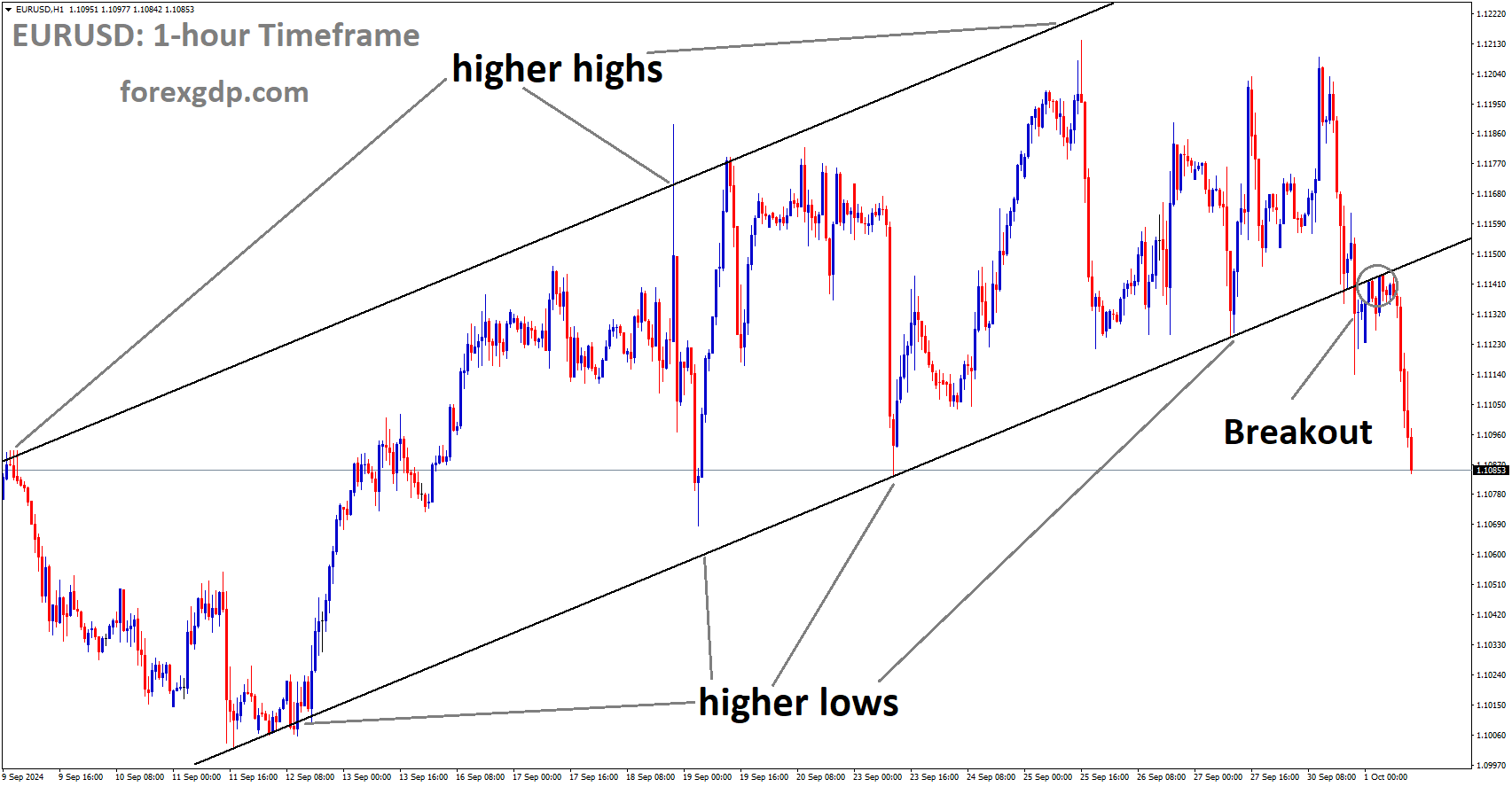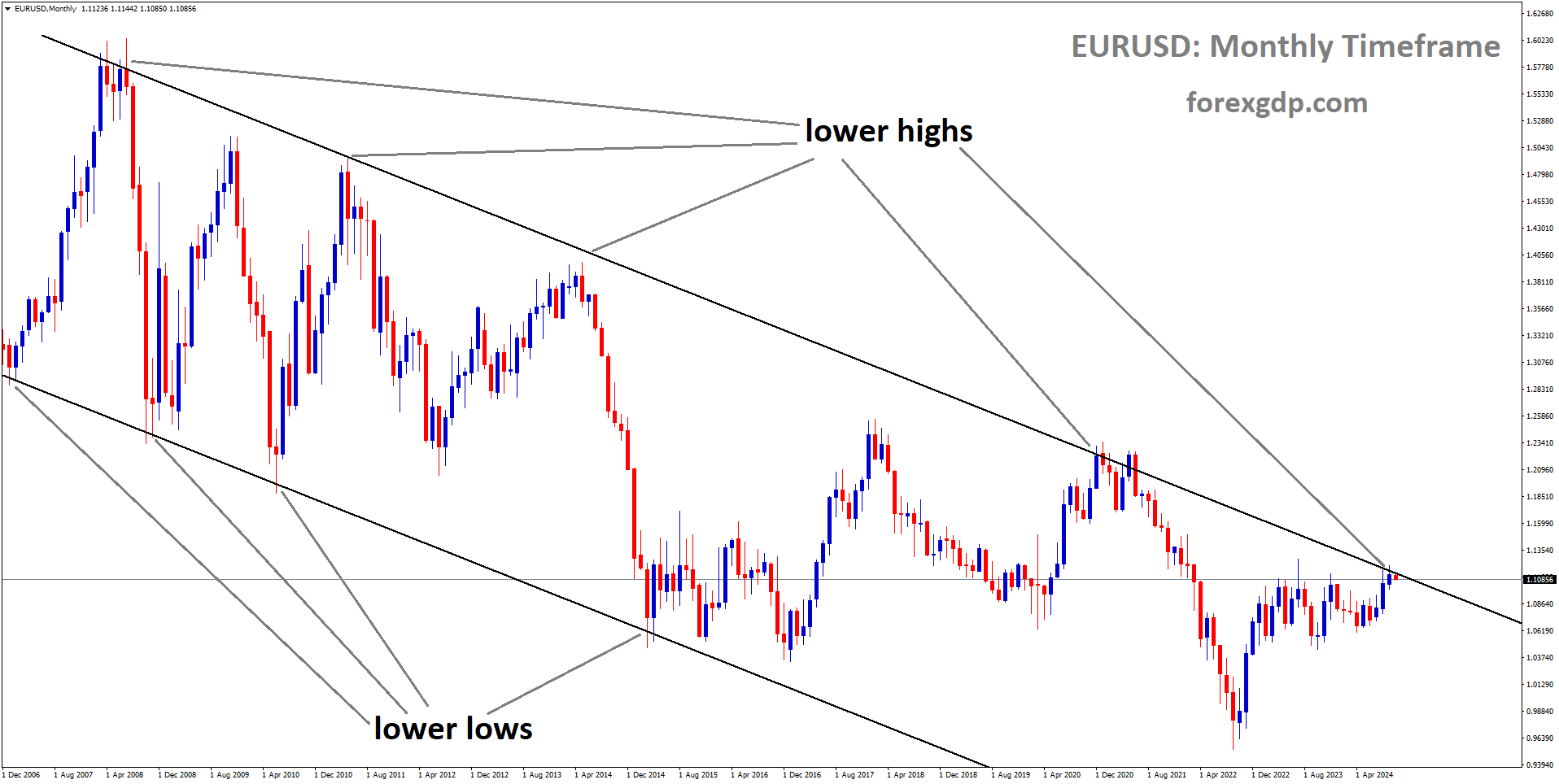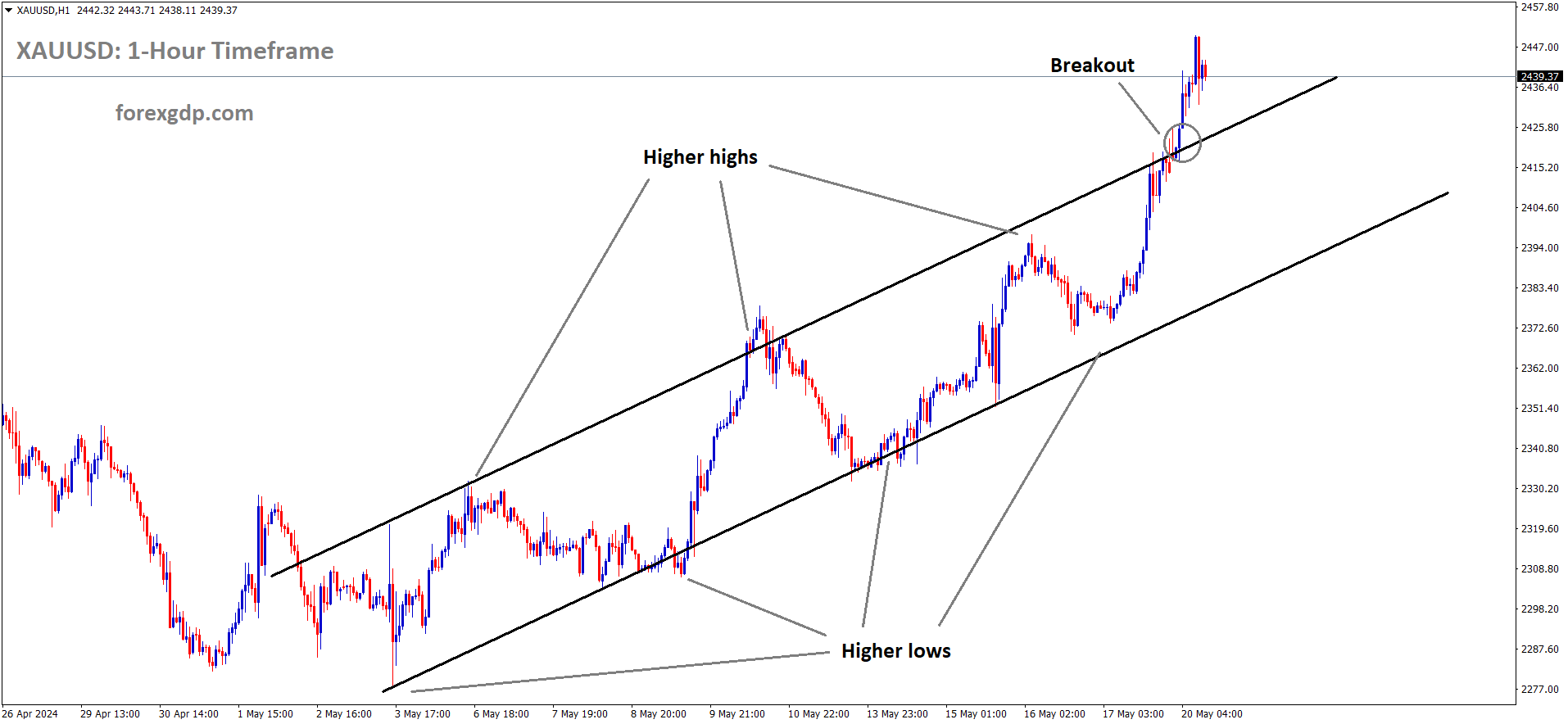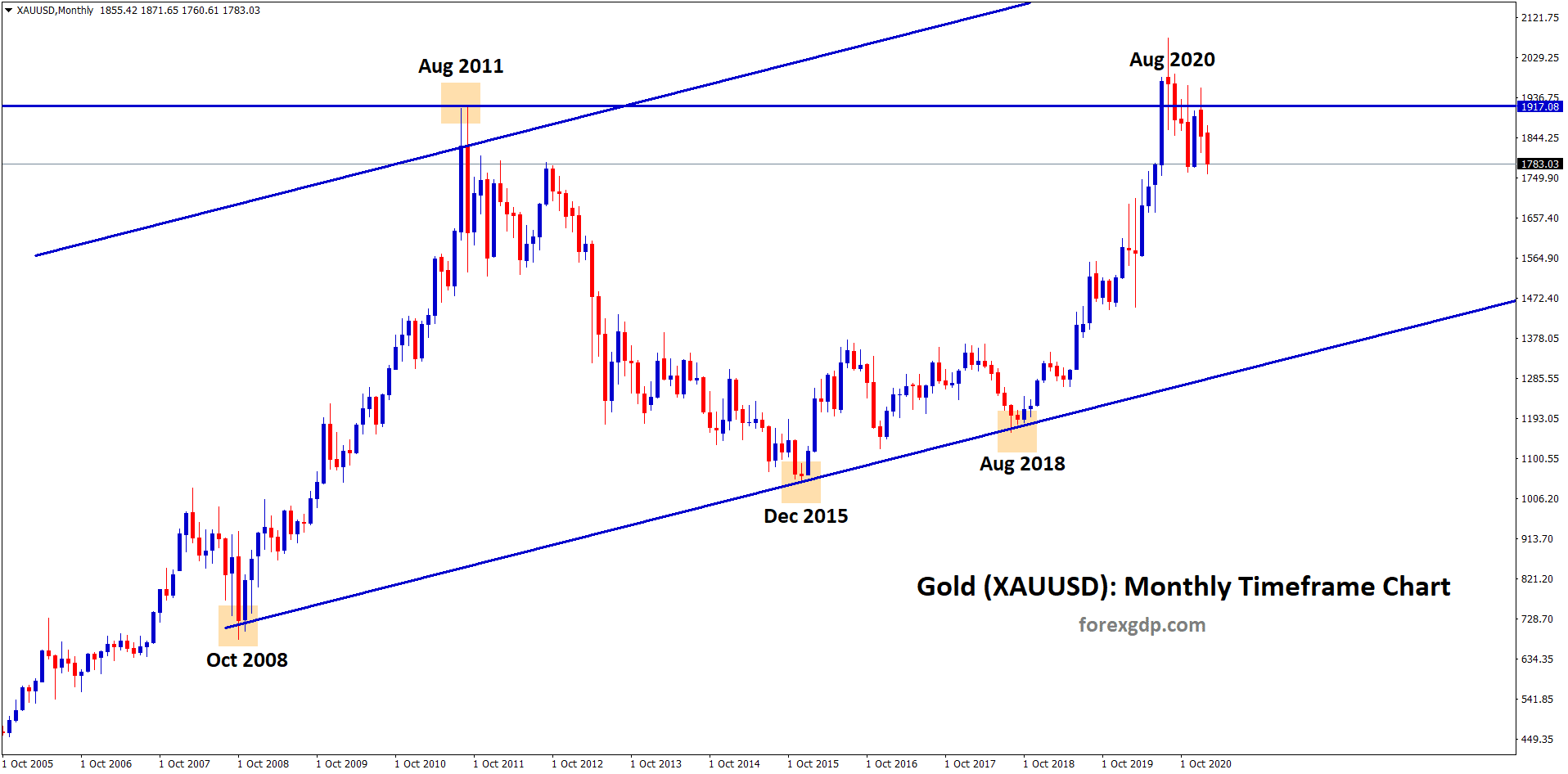EURUSD has broken the box pattern in the downside
#EURUSD Analysis Video
EUR/USD Experiences Pressure Amid Lower Inflation Data and Anticipated ECB Rate Cut
The EUR/USD currency pair has recently come under pressure, driven by key economic data and central bank decisions. In this article, we’ll dive into what’s been happening with EUR/USD, explore how inflation data and central bank actions are influencing the market, and look at what investors can expect in the coming weeks.
Eurozone Inflation Falls Short of Expectations
Inflation is a major factor that can influence a currency’s value, and recent data from the Eurozone has given traders a lot to think about. The preliminary data for the Harmonized Index of Consumer Prices (HICP) in September was released, showing that inflation had dropped more than expected.
What Is the HICP, and Why Does It Matter?
The Harmonized Index of Consumer Prices (HICP) is a key measure of inflation within the Eurozone. It tracks how prices of goods and services change over time, and central banks use this data to make decisions on interest rates.
In September, the annual headline HICP came in at 1.8%, which was lower than both the forecast of 1.9% and August’s figure of 2.2%. This might not sound like a huge drop, but in the world of economics, every decimal point can be significant. The core HICP, which strips out volatile elements like food and energy, also rose at a slower pace than expected, further intensifying concerns.
When inflation falls short of expectations, it can signal that an economy is slowing down. In response, central banks might cut interest rates to stimulate economic growth, and that’s exactly what’s expected from the European Central Bank (ECB).
The ECB’s Likely Response: More Rate Cuts on the Horizon
If you’ve been following the European Central Bank (ECB) lately, you know that they’ve already started cutting interest rates to boost the economy. In September, they delivered their second rate cut as part of their current policy-easing cycle. And now, with inflation dipping below their 2% target, there’s a strong belief that the ECB will cut rates again in October.
Why Do Central Banks Cut Interest Rates?
Interest rate cuts are often used as a tool to stimulate economic growth. When rates are lowered, borrowing becomes cheaper for businesses and consumers. Ideally, this leads to increased spending and investment, which can help revive a sluggish economy.
EURUSD has broken the Ascending channel in the downside
The Eurozone, however, isn’t just facing lower inflation. Other factors, like a struggling labor market and overall weak economic performance, are contributing to the need for more support from the ECB. Even ECB President Christine Lagarde has acknowledged that the economic recovery in Europe is facing headwinds. During a parliamentary hearing in Brussels, she noted that inflation is expected to return to target, but further support may be needed, hinting at upcoming rate cuts.
U.S. Economic Data and Its Impact on EUR/USD
While Europe is dealing with inflation and potential rate cuts, the other side of the equation – the U.S. economy – is playing a big role in EUR/USD movements as well. Recently, the U.S. dollar has seen some recovery, putting additional pressure on the EUR/USD pair.
U.S. Labor Market Data in Focus
Investors are particularly interested in upcoming U.S. labor market data. Employment reports, such as the ADP Employment Change and Nonfarm Payrolls (NFP), give insight into how well the economy is doing. Strong labor market data could bolster the case for the Federal Reserve (Fed) to keep interest rates steady or make smaller cuts than previously expected.
The U.S. Federal Reserve has already made some cuts this year, and there was speculation about larger cuts in November. However, after comments from Fed Chair Jerome Powell, those expectations have cooled off. Powell suggested that the Fed is likely to make smaller, quarter-percentage-point cuts in the coming months, which has led traders to adjust their expectations.
EURUSD is moving in a descending channel, and the market has reached the lower high area of the channel
Atlanta Fed President Raphael Bostic has also hinted that larger cuts could be on the table if U.S. employment data disappoints. So, all eyes are now on the upcoming reports to see whether the Fed will stay the course or make bigger moves to support the economy.
What Could Happen Next for EUR/USD?
So, what should you be watching for in the coming weeks when it comes to EUR/USD?
ECB’s October Meeting
The next big event for EUR/USD will be the ECB’s meeting in October. If the ECB cuts rates again, as many expect, it could weaken the euro even further. On the flip side, if inflation shows signs of stabilizing or the ECB decides to hold off on further cuts, we could see the euro regain some strength.
U.S. Labor Market Data
As mentioned earlier, U.S. labor market data is another key factor to watch. Strong numbers could lead to more optimism about the U.S. economy, boosting the U.S. dollar. Weaker-than-expected data, however, could raise expectations for more aggressive rate cuts by the Fed, potentially softening the dollar and providing some relief to EUR/USD.
Global Economic Trends
It’s also worth keeping an eye on broader global economic trends. Trade tensions, geopolitical events, and other macroeconomic factors can have a big impact on currency markets. For example, if we see more signs of a global slowdown, both the ECB and the Fed may be forced to take more aggressive action to support their respective economies.
Final Thoughts
The EUR/USD currency pair is currently facing a mix of downward pressures, with lower-than-expected inflation in the Eurozone and a strengthening U.S. dollar driving much of the movement. The European Central Bank is widely expected to cut interest rates again in October as they grapple with slower inflation and weak economic performance across the Eurozone.
On the other side, U.S. economic data will play a crucial role in determining whether the Federal Reserve will stick with smaller rate cuts or opt for more aggressive moves in the coming months. Both central banks are navigating tricky economic conditions, and their decisions will continue to shape the direction of EUR/USD in the weeks ahead.
For traders and investors, staying informed about these key developments is critical. Whether you’re new to the world of forex or a seasoned pro, keeping an eye on inflation data, central bank decisions, and labor market reports will help you stay ahead of the game.
Remember, the currency market is ever-changing, and being aware of these factors can give you an edge as you navigate this complex and dynamic landscape. Happy trading!
Don’t trade all the time, trade forex only at the confirmed trade setups
Get more confirmed trade signals at premium or supreme – Click here to get more signals , 2200%, 800% growth in Real Live USD trading account of our users – click here to see , or If you want to get FREE Trial signals, You can Join FREE Signals Now!

